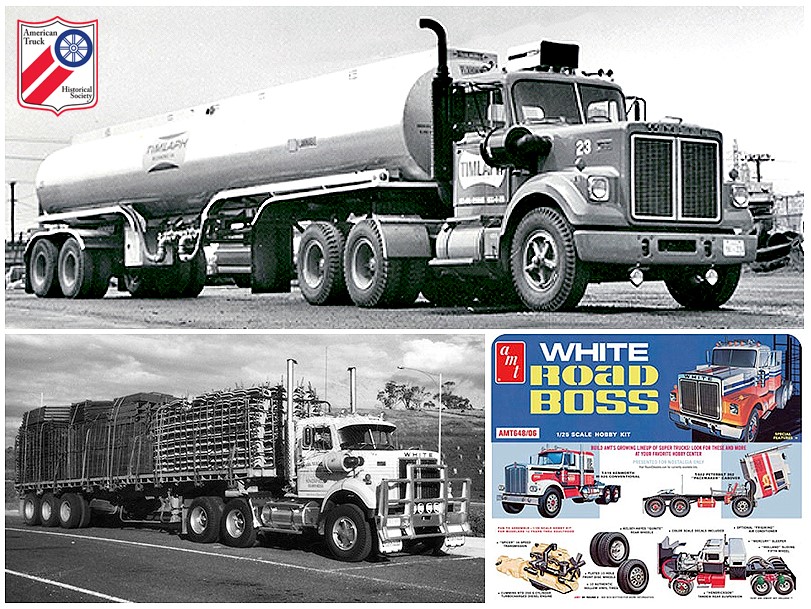With a name that sounds like an action movie you’d catch at the drive-in, the White Road Boss was produced from 1973 until 1981 and earned a reputation as one of the most reliable and practical trucks of its time, built to meet the demands of jobs.
White designed the Road Boss as an upgrade to the 4000 and 9000 series, enhancing durability and performance. A wider fiberglass tilt hood improved cooling, accommodating radiators up to 1,400 square inches for larger engines.
The Cummins 250 was standard, with ten optional engines from 230 to 350 horsepower. A Spicer automatic transmission made operation easier, while its steel cab and heavy-duty frame suited both long-haul and vocational use. Engine mountings moved forward for a shorter wheelbase. Other upgrades included a 40% stronger cranking motor and a more efficient alternator with a built-in regulator.
A two-stage Cycloflow air cleaner improved efficiency to 99.5%, replacing less consistent oil bath models. Induction piping was routed through the tilt hood, reducing noise in the cab. Pre-engineered fifth-wheel and frame rail combinations allowed off-the-shelf ordering, with BBC options of 92, 108, or 122 inches.
The redesigned interior featured larger, non-glare fiber-optic gauges for better visibility. A larger glove box and ashtray, along with repositioned HVAC controls, added convenience. Standard interiors came in two-tone padded vinyl, with an optional wood-grain dash. Cab insulation reduced road noise, with improvements to the engine tunnel and shift tower boot enhancing comfort.
On the outside, it featured a redesigned grille, bumper, headlight bezels, bullet marker lights, and horns. The bumper used eight bolts instead of four for extra strength. Other changes included relocating the battery box to reduce vibration, redesigned fuel tanks for either frame rail, and a new rear suspension with low-rate springs. Additional features included a lifetime-adjustment steering drag link, improved clutch and transmission splines, longer cab steps, towing and lifting devices, and improved fuel caps.
ATHS members down under will recognize the Road Boss as a familiar sight on Australian highways and backroads. The truck was (and still is) well-suited to the country's rugged conditions, often adapted with bull bars to protect against kangaroo strikes, much like deer collisions in the U.S. Its rugged and imposing design also earned it a starring role in the 2015 blockbuster Mad Max: Fury Road.
On a smaller scale, the popularity of the Road Boss extended beyond the road, as the AMT 1:25 model kit became one of the most sought-after big rig kits among hobbyists. Full-size, the truck's durability, engineering, and practicality kept it a staple in fleets and job sites, representing the era's no-nonsense trucking approach.
